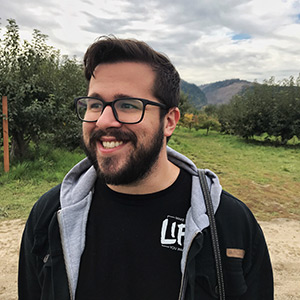Danielle Blacklock took over as director of NOAA Fisheries’ Office of Aquaculture in mid-March, just as the COVID-19 pandemic began to come to a head in the United States. Over the past decade, Blacklock has served in multiple positions at NOAA, most recently as a senior policy advisor for aquaculture. In that role, Blacklock completed a six-month assignment at the Food and Agriculture Organization of the United Nations, focused on aquaculture sustainability globally. She also served as the acting deputy in the office for several months.
Blacklock is charged with overseeing the aquaculture component of NOAA’s sustainable seafood portfolio and providing the strategic vision for developing a stronger aquaculture industry in the United States. Nearly a month into her appointment, SeafoodSource connected with Blacklock to discuss her goals as director, the office’s response to COVID-19 complications and what the future of U.S. aquaculture looks like.
SeafoodSource: Is NOAA still prioritizing domestic aquaculture? What are some short- and long-term goals for the office?
Blacklock: Yes, increasing domestic marine aquaculture remains a priority for the Department of Commerce and NOAA. We are currently working in our organization, across the federal government, and with partners to support cutting-edge research and federal policy to expand the social, economic, and environmental benefits of marine aquaculture.
Short-term goals for the office include supporting the existing U.S. aquaculture industry through the challenges and impacts of COVID-19. NOAA recently stood up a team of experts from across the agency to collect and analyze COVID-19-related impacts on the U.S. commercial seafood industry, including wild harvest and aquaculture. We are focused on working with our stakeholders to provide guidance and assistance during this difficult time.
Longer-term, the office will continue to support technology development and transfer, a more efficient permitting process, and working to dispel misperceptions of sustainable aquaculture.
SeafoodSource: Are there any concerns that the coronavirus outbreak will set back NOAA’s efforts on aquaculture?
Blacklock: NOAA Fisheries recently [convened] a team of experts from across the agency to collect and analyze COVID-19-related impacts on the U.S. commercial seafood industry, including wild harvest and aquaculture. We are interested in learning about the virus' impacts on their employees, their business, the market, and the broader seafood supply chain. We are also looking at impacts on the recreational fishing industry. With this effort, we are interested in assessing immediate and long-term needs to secure and enhance the resilience of the U.S. seafood and fisheries industries and we will continue to work with the [Trump] administration and Congress on this important, unprecedented COVID-19-driven effort.
SeafoodSource: What are the biggest challenges facing U.S. aquaculture development today?
Blacklock: First, we need to address the challenge around acceptance of marine aquaculture. The public still encounters information that is often out-of-date, incomplete, or inaccurate. As more communities become familiar with the industry, they start to understand the benefits it provides for protein production, coastal economies, and as a sustainable seafood complement to wild-capture [fisheries].
Another challenge facing marine aquaculture development is the uncertainty of permitting. The U.S. is a world leader in setting and enforcing environmental laws and we have a framework of regulations that help ensure sustainability of our industries. NOAA has been working with our partner agencies to increase permit efficiency that can offer potential growers a more defined path toward getting farms in the water. Growing more seafood domestically, under those laws and regulations is the right choice for people and the planet.
SeafoodSource: While aquaculture development in the U.S. is ticking upwards, the country still lags behind much of the world – what can NOAA and the U.S. sector do to boost growth?
Blacklock: The American aquaculture industry is a small producer on a global scale, but plays a major role in developing aquaculture advancements, supplying a variety of advanced technology, feed, equipment, and investment to other producers around the world. To grow our domestic industry, NOAA’s ongoing aquaculture efforts are focused on three primary challenges to aquaculture: A) regulatory efficiency measures, B) public education on aquaculture, and C) increasing collaborative R&D to support pilot projects. Through these efforts we are working to increase the amount of sustainable domestic seafood produced in the U.S.
As for industry, it is clear that they are going to need help to rebuild from the impacts of COVID-19. Right now aquaculture producers are not focused on industry growth. They are figuring out how to keep staff employed and how to keep their businesses running during this unprecedented event.
SeafoodSource: What are your thoughts on the rapid series of announcements around new Recirculating Aquaculture System projects in the U.S.?
Blacklock: I think it's encouraging. Private sector investment is a great way to drive innovation and job growth. These recirculating start-ups are starting to attract the type of investment any new business needs. As aquaculture continues to play an important role in global food production, a variety of technologies and systems will be needed to meet the demand for seafood. We are going to need seafood produced from a range of technologies – wild harvest, net pens, mussels on a line, and recirculating facilities, and often some mix among them. Recirculating systems, like those [being built] in Maine and Florida, are one method of aquaculture while other producers are looking to expand in offshore and nearshore marine waters.
SeafoodSource: Do you have any advice for business leaders looking to start or invest in a new domestic aquaculture project in the current climate?
Blacklock: NOAA has a variety of resources for those interested in starting or expanding an aquaculture operation. These resources include a dedicated network of Sea Grant extension agents and NOAA Fisheries regional aquaculture coordinators who can help those interested with everything from how to apply for permits to technical guidance on operating a farm. These contacts are a key resource to help growers understand the challenges and benefits of aquaculture in their region.
Photo courtesy of NOAA







